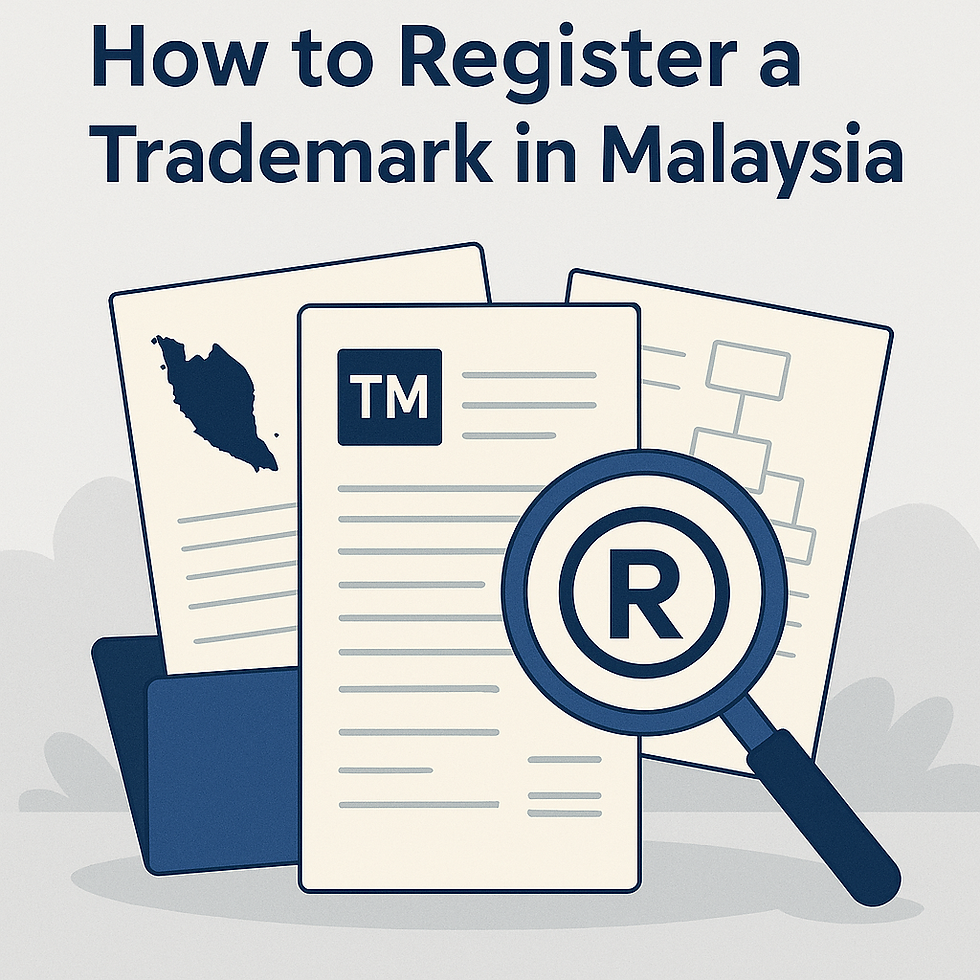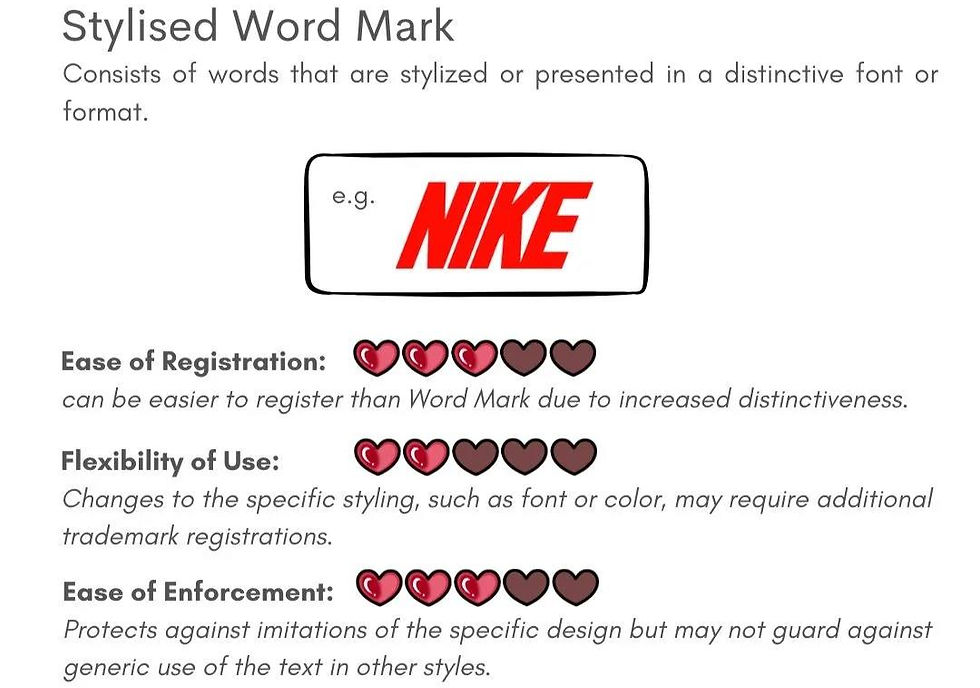- Wei Wei

- Nov 27
- 3 min read

When it comes to trademark registration in Malaysia, many business owners jump straight into filing a trademark application, only to discover later that their brand name is already taken or too similar to an existing mark. This often leads to rejection, wasted fees, rebranding costs or even legal disputes. This is why conducting a trademark search is one of the most important steps before registering your trademark in Malaysia.
A trademark search helps you check whether your proposed brand name or logo already exists on the Register, or if there are earlier marks that are too similar. What matters is not just whether the name is identical, but whether it is confusingly similar in appearance, sound or overall impression, especially when used on similar goods or services.
When it comes to trademark searches in Malaysia, there are generally two ways to approach it.
I. Preliminary Search and Advice (PSA) by MyIPO
A Preliminary Search and Advice, commonly known as a PSA, is a paid service offered by MyIPO. Under this option, MyIPO conducts a search and provides an official opinion on whether your proposed trademark is likely to be registrable.
The PSA is usually narrower in scope and the response is typically straightforward. In most cases, MyIPO will indicate whether the mark is registrable or not registrable. Sometimes, brief suggestions are provided on how the mark or specification can be adjusted to improve the chances of acceptance.
One of the key benefits of the PSA is the refund mechanism. If MyIPO advises that your mark is registrable but your actual trademark application is later refused, you may be entitled to a refund of the PSA fee. While this does not guarantee approval, it provides an added layer of comfort for business owners who want official guidance before proceeding.
II. DIY Trademark Search
The second approach is to conduct the trademark search yourself using MyIPO’s online database. While this may sound technical, it can actually be quite manageable once you understand a few basics.
The first thing you need to identify is whether you are searching for a word mark or an image mark. If you are searching for a word, the process is relatively straightforward. You can type in your proposed brand name and also try variations, similar spellings and similar-sounding words to see what already exists on the Register. This helps you identify marks that may conflict with yours even if they are not exactly the same.
If you are searching for a logo or image, it becomes slightly more complex. Image searches require an understanding of the Vienna Classification, which is an international system used to categorise figurative elements in trademarks such as animals, plants, shapes and symbols. By identifying the correct Vienna code for your logo, you can search for visually similar marks that may pose a risk.
Another important factor in a DIY search is understanding Nice Classes. Trademarks are registered under specific classes of goods and services, and similarity is assessed not only by the mark itself but also by the type of products or services it covers. You should search within your relevant class and also consider a cross-class search to identify potential conflicts in related industries. If you would like a clearer explanation of how Nice Classification works and how to choose the right class, you can read our detailed guide here.
A DIY trademark search also helps you identify potential infringement risks. If your proposed mark is too similar in appearance, sound or overall impression to an existing trademark in the same or related classes, you could be exposed to objections or legal action for causing consumer confusion.
If all of this sounds a bit too complicated, you do not have to navigate it alone. At Gordian IP, our trademark registration service includes a free preliminary search, so you can gain early insight into potential risks and registrability before moving forward.
When done properly, a search gives you valuable insight into what already exists on the Register and helps you evaluate the level of risk before committing to your brand.
A trademark search should not be seen as a mere formality. It is a practical risk management step that protects your brand, your budget and your long-term strategy. Whether you opt for a PSA, a DIY search or professional assistance, taking the time to search before filing lays a strong foundation for a smoother trademark registration process in Malaysia.
In short, before registering a trademark in Malaysia, search first. A little caution at the beginning can save you significant time, money and stress later on.































































































